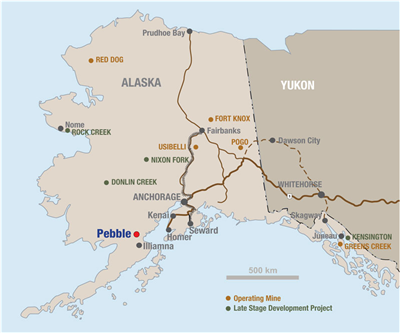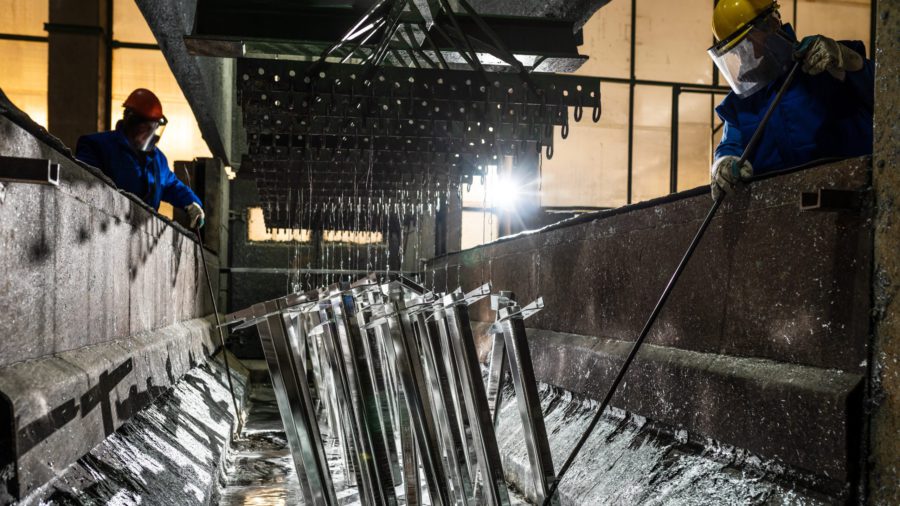Northern Dynasty shares plummet after Pebble deal dies

Shares in Northern Dynasty Minerals (TSX: NDM) nosedived 35% on Monday after the explorer’s 50% partner in the Pebble project, potentially the world’s richest copper-gold mine, bailed out.
World number four diversified miner Anglo American (LON: AAL) said Monday it is pulling out of the project in the Bristol Bay region of Alaska and at the same time write off its 300 million investment.
Vancouver-based Northern Dynasty has vowed to continue with the project .
Under the partnership Anglo committed to staged investment of $1.5 billion to keep its half share.
With those funds off the table it is difficult to see how Northern Dynasty – now worth $140 million in Toronto – could come up with estimated $80 million a year needed to advance the project to its earliest possible construction start date of end-2017.
The February 2011 preliminary assessment for Pebble saw capex requirements of just under $5 billion. Six-seven years on that’s gonna look more like $7 billion.
That is if Pebble is permitted, also not a likely scenario any time soon.
Then again, in the words of Anglo CEO Mark Cutifani “Pebble is a deposit of rare magnitude and quality.”
With average annual production estimates of more than 500 million pounds of copper, 660,000 oz of gold, 1.75 million oz of silver and 25 million pounds of molybdenum for the first 30 years (and the possibility to extend that to 78 years) is Pebble is just too rich a deposit not to pursue.
Perhaps not just during this cycle.
————–
Twitter reaction, as expected, focused on the salmon:
Alaskan salmon breathing a little easier as Anglo American pulls out of Pebble Mine plan. Will it still go ahead? http://t.co/EKpqXZlSF4
— Adam Welz (@AdamWelz) September 16, 2013
{{ commodity.name }}
{{ post.title }}
{{ post.date }}

Comments
2ndOrion
Nature has had to have been grinding away at the rocks that this deposit consists of for multitudes of years providing a distinct continuous natural pollution from it that even the salmon have been using as a means to return to the streams that they originally came from. If the mineral production plan includes means to prevent this natural pollution from changing in the streams the salmon originated from, -then how does the production from this mine harm any natural environment or any salmon? Has anybody considered this fact -or is everybody whipped into a crowd hype frenzy that none even consider what has really been going on for multitudes of years?